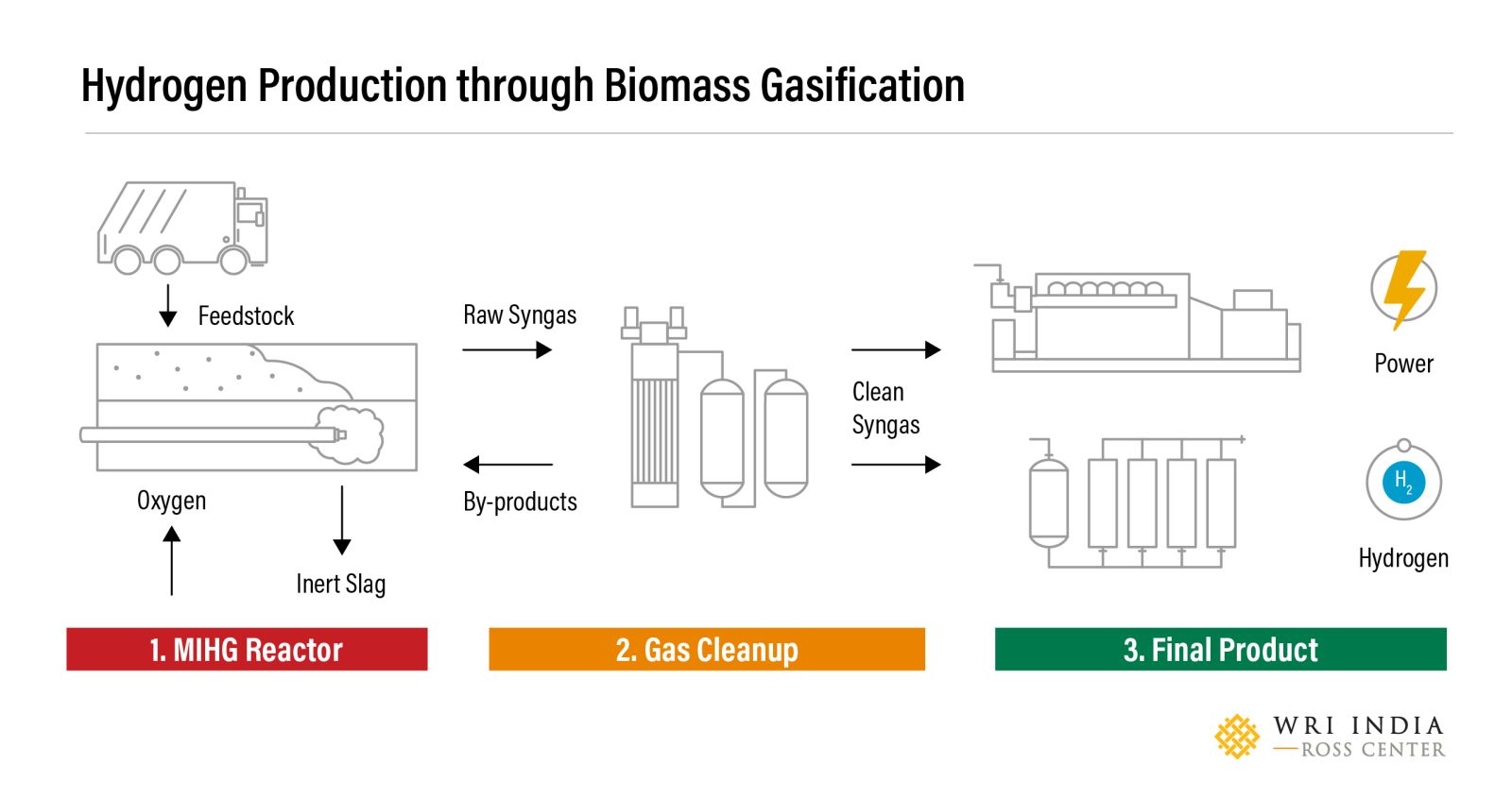Biomass gasification is emerging as a promising technology for producing hydrogen sustainably. Here’s a simplified breakdown of its key features:
What is Biomass Gasification?
-
A process that converts biomass into hydrogen by heating it with oxygen, air, or steam.
-
Non-intermittent and fossil-free, making it an eco-friendly option.
-
Can integrate with electrolysis for added efficiency.
Source: WRI India-Ross Center Key Benefits

Challenges to Overcome
-
Industrial-scale demonstration is needed.
-
Impurities in the hydrogen must be addressed for applications like fuel cells.
-
Limited policy support compared to electrolysis-based hydrogen.
Applications

-
Future Outlook
-
Biomass gasification complements electrolysis by offering low-emission hydrogen in regions with abundant biomass but limited renewable electricity.
-
Ideal for industries requiring negative-emission hydrogen.
Why Should You Care?
This technology offers a sustainable path to hydrogen production while tackling climate change. With advancements in Carbon Capture and Storage (CCS) and policy support, biomass gasification could become a key player in the green energy transition.
Disclosure:
This information is provided solely for educational and knowledge-sharing purposes. It is not intended to harm or criticize any brand, person, company, or organization. All data and insights are based on publicly available information and aim to promote understanding of clean energy technologies.









